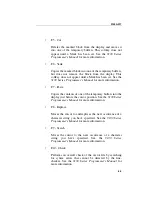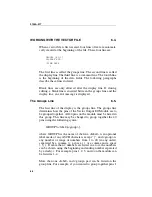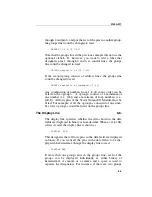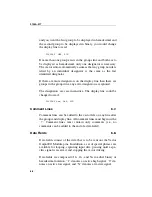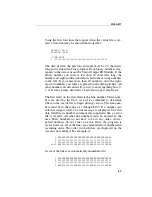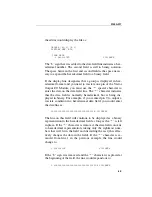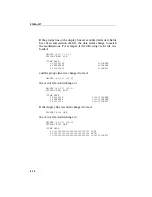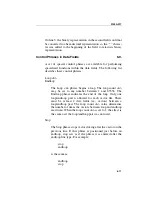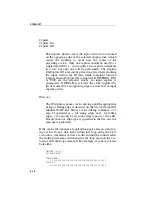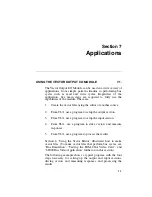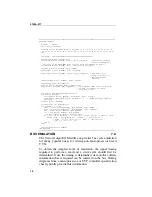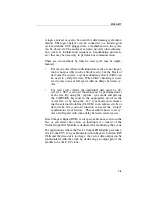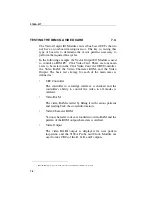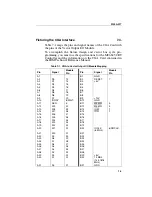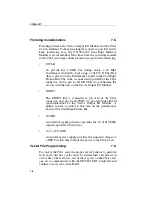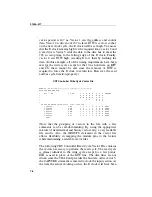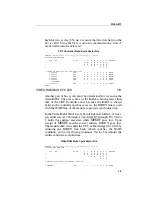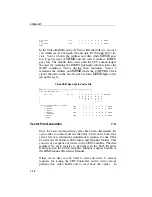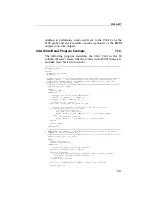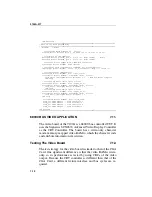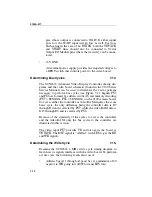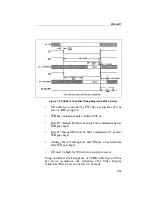
7-1
Section 7
Applications
USING THE VECTOR OUTPUT I/O MODULE
7.1.
The Vector Output I/O Module can be used in a wide variety of
applications, from simple pattern stimulus to performing bus
cycles such as read and write cycles. Regardless of the
application, five main steps are required to fully use the
capabilities of the module. These are:
1.
Create the vector files using the editor or another source.
2.
From TL/1, use a program to setup the output section.
3.
From TL/1, use a program to setup the input section.
4.
From TL/1, use a program to drive vectors and measure
responses.
5.
From TL/1, use a program to process the results.
Section 6 “Using the Vector Editor” illustrated how to make
vector files. (To make vector files that perform bus cycles, see
“Bus Emulation”, “Testing the IBM CGA Video Card”, and
“68000 Bus Video Application” further on in this section.)
The following example shows a typical program with the four
steps necessary for setting up the output and input sections,
driving vectors and measuring responses, and processing the
results.
Summary of Contents for 9100A Series
Page 6: ...vi ...
Page 8: ...viii ...
Page 10: ...x ...
Page 14: ...9100A 017 1 4 ...
Page 24: ...9100A 017 3 6 ...
Page 44: ...9100A 017 5 4 ...
Page 58: ...9100A 017 6 14 ...
Page 83: ...A 1 Appendix A New TL 1 Commands ...
Page 84: ...9100A 017 A 2 ...
Page 87: ...clockfreq 3 For More Information The Overview Of TL 1 section of the Programmer s Manual ...
Page 88: ...clockfreq 4 ...
Page 91: ...drivepoll 3 For More Information The Overview Of TL 1 section of the Programmer s Manual ...
Page 92: ...drivepoll 4 ...
Page 104: ...vectordrive 4 ...
Page 107: ...vectorload 3 For More Information The Overview Of TL 1 section of the Programmer s Manual ...
Page 108: ...vectorload 4 ...
Page 116: ...9100A 017 C 2 ...
Page 117: ...9100A 017 C 3 ...
Page 118: ...9100A 017 C 4 ...



